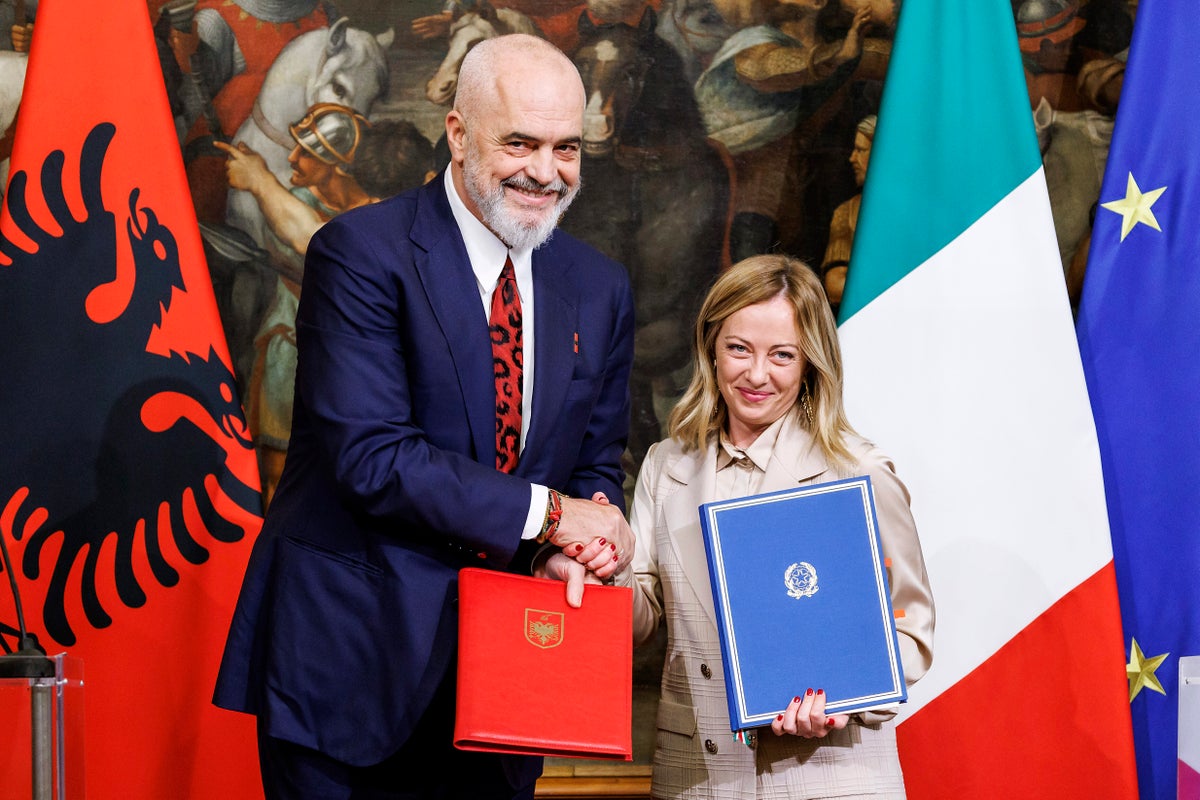
Albania agreed Monday to give temporary shelter to some of the thousands of migrants who reach Italian shores while their asylum bids are being processed, offering its neighbor across the Adriatic Sea some relief in managing some of the arrivals.
The groundbreaking initiative was announced after Italian Premier Giorgia Meloni met in Rome with Albanian Prime Minister Edi Rama.
Italy will pay for the construction of two centers in Albania which can hold up to 3,000 migrants at a time, under the deal. Children and pregnant women will be excluded from the plan. If Italy rejects the asylum bids, Albania would deport the migrants. Albania would also provide external security for the two centers, which would be under Italian jurisdiction, Meloni told reporters.
Meloni said if asylum applications are swiftly processed, as many as 36,000 migrants could be sent for processing on Albanian territory annually. That could help relieve chronic overcrowding at initial asylum processing centers in Italy, where over the last years, hundreds of thousands of migrants have set foot after making risky sea voyages across the Mediterranean from Libya, Tunisia, Turkey and other countries.
Italy has sought more solidarity, mainly in vain, from fellow European Union nations, to help it handle the large number of arrivals. On Monday it turned to Albania, which is hoping to join the bloc.
Meloni expressed gratitude to Rama for offering assistance. Albania “is not only a friend of Italy, but also a friend of the European Union,” she told reporters while flanked by the prime minister. Albania “behaves as if it's one” of the EU members, added the premier.
Italy is a big booster of Albania's bid to join the European Union.
Albania's leader in turn expressed gratitude on behalf of Albanians who found refuge in Italy, and "escaped hell and imagined a better life.” That was a reference to an influx of Albanians to Italy in the early 1990s.
In 1991, some 20,000 Albanians came on one dangerously overcrowded ferry that reached the southeastern Italian region of Puglia. It was less than a year since political pluralism was announced in that country, which for decades, under communism, had been closed to much of the world, and only months after the first democratic election. Poverty was widespread, including bread in short supply, and Albanians saw Italy as their “Western window.” Many of the Albanians settled in Italy, obtained work and raised families.
So far this year, 145,000 migrants have arrived by sea in Italy on smugglers' unseaworthy boats, compared to 88,000 in the same period last year.
Many of the migrants are ineligible for asylum because they are seeking to leave poverty, not persecution or war. But while they are awaiting for final decisions, many make their way to northern Europe where they hope to find family or jobs.
Under the accord reached on Monday, Italian authorities will handle disembarkation and identification procedures in the Albania port of Shengjin, some 75 kilometers (46 miles) northwest of Tirana, the Albanian capital.
The new centers should be up and running by next spring, Meloni said.
Rama said Italy's geography, with the nation jutting southward across much of the Mediterranean, is “its curse. When you enter Italy, you enter the EU."
Under EU rules, the nation where asylum-seekers first set foot must process their applications, even if the migrants want to go elsewhere.
——-
AP reporter Llazar Semini contributed from Tirana, Albania.
Follow AP’s global migration coverage at https://apnews.com/hub/migration







